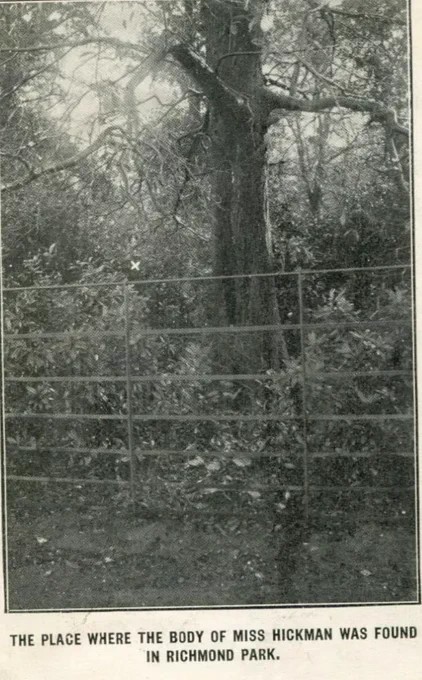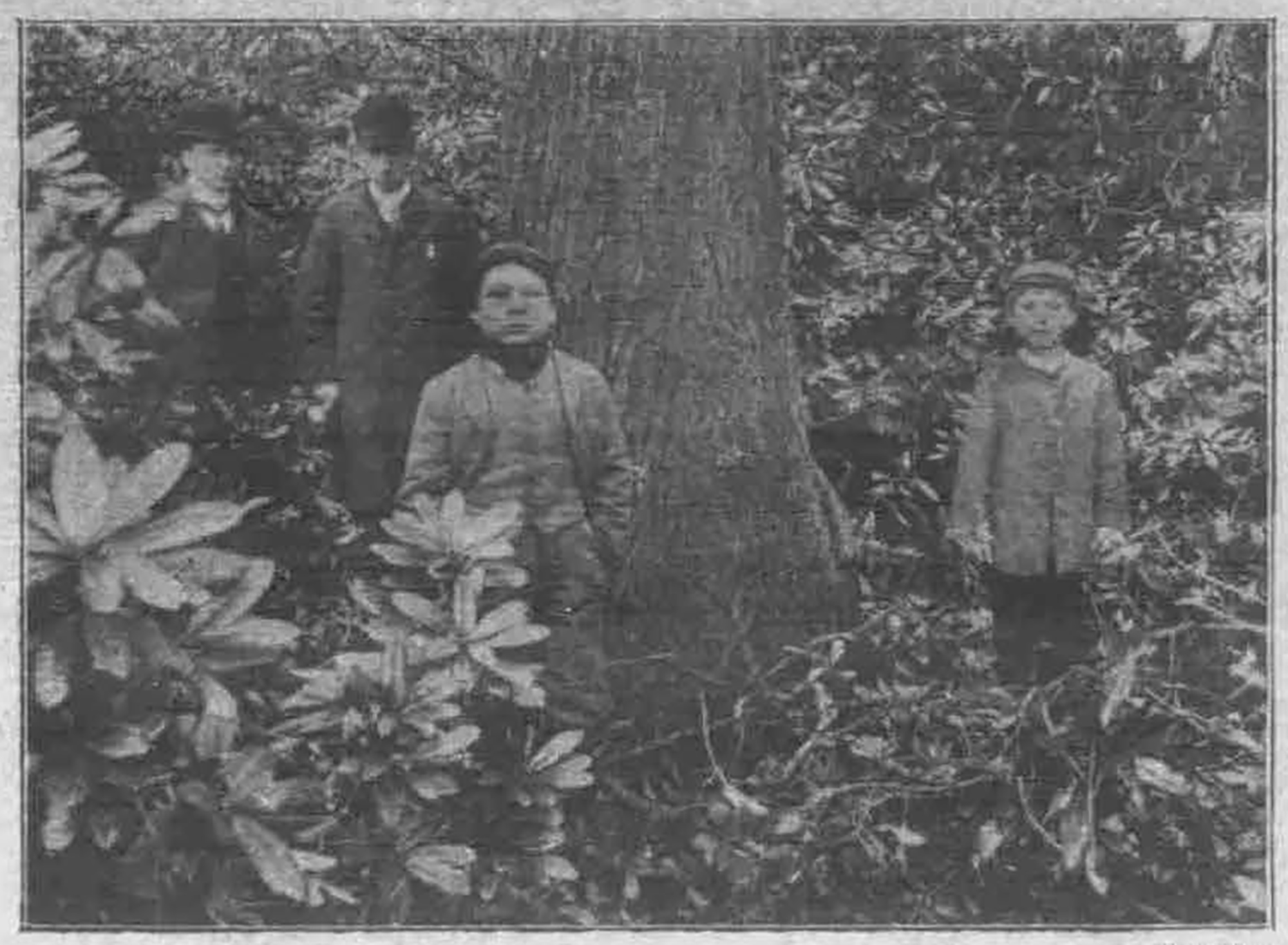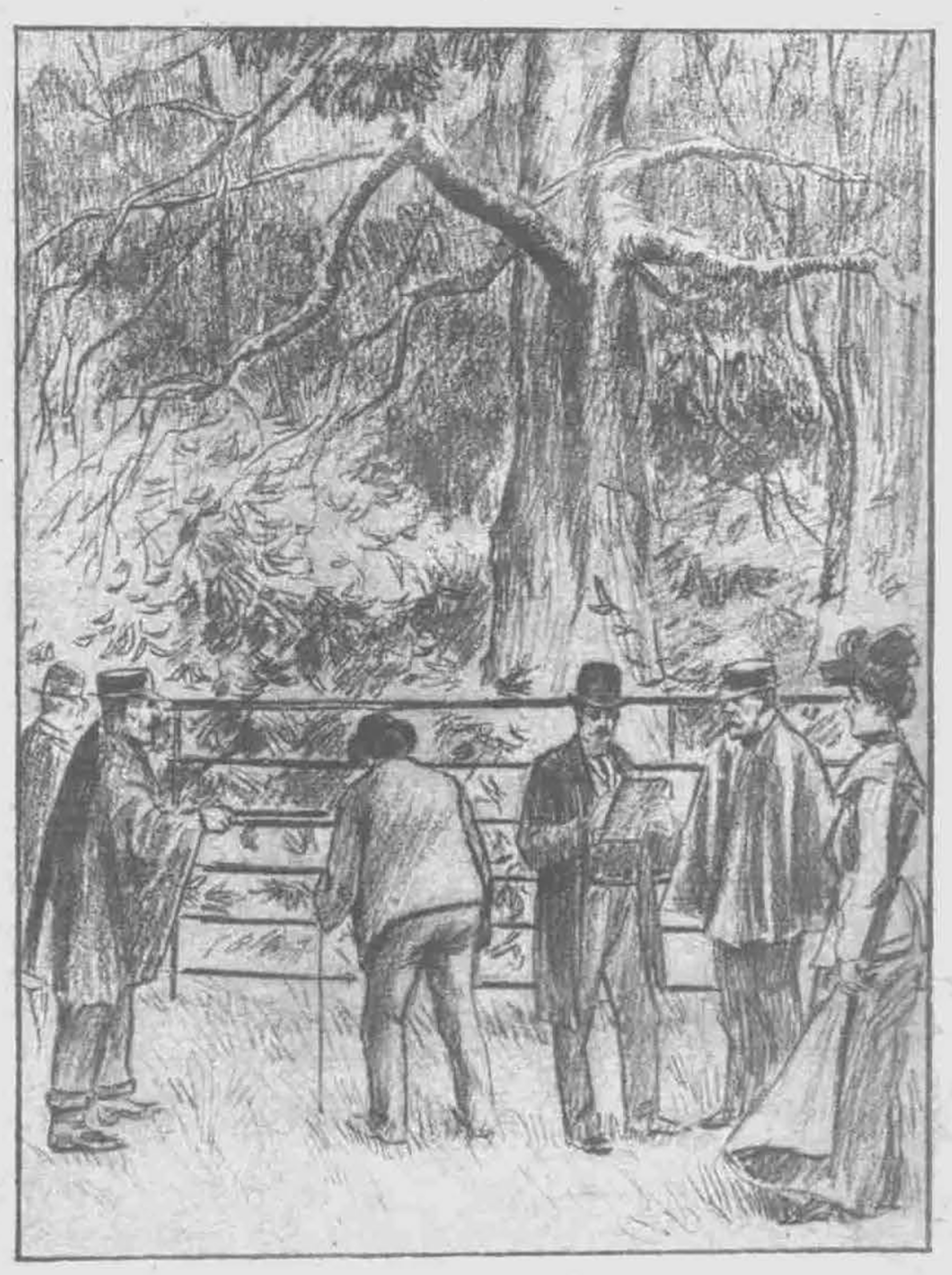

Age: 29
Sex: female
Date: 15 Aug 1903
Place: Sidmouth Plantation, Richmond Park, Surrey
Sophie Frances Hickman was found dead in Richmond Park.
She was a lady doctor and was employed temporarily at the Royal Free Hospital on Grays Inn Road, London. She had left work on Friday 15 August 1903 heading off towards Holborn, and was assumed to have gone home to sleep but was not seen again by either her parents or hospital staff.
Her decomposed remains were found some months later in Richmond Park.

Her funeral took place in Richmond on 23 October 1903. The sun shone brightly and over 10,000 people attended.
She had arrived late on the Friday evening at the hospital to start work for the following day and was working during the Saturday morning in the wards. She was then seen to leave around noon in an ordinary walking costume after which she was never seen again. Her absence was not noted during the afternoon but people became concerned during the evening and her parents who lived in Confield Gardens in South Kensington were contacted but they had not seen her either.
She was found by three boys who were wandering through Sidmouth Wood/Plantation in the park. she was covered with leaves lying some distance from a trunk.
Amongst the people that identified her remains at the inquest was her servant who identified her swan fountain pen, a watch and chain, a pair of spectacles, a swimming medal and a St Johns Ambulance medal.
A musician said that on 21 October 1903 he had been walking through Richmond Park opposite the Sidmouth Plantation where her body was found when he found a knife which was presented as evidence at the inquest.
It was first reported that her throat had been cut but an inquiry showed that the remains had been mangled by rats. No knife, other than the one presented by the musician was found nearby and it was noted that if there had have been one it would not have eluded the search.

About 12 feet from her body they found a small medicine bottle containing traces of some dark liquid and it was thought that she might have committed suicide by taking poison though no trace of poison was initially found in her decomposed body. It was then noted by the medical men that there was no reason to suspect foul play.
At her inquest, several doctors gave evidence to say that she was quite cheerful before she disappeared.
An analyst who worked for the home office said that he had received portions of the stomach, intestines and kidneys said to have come from her body as well as a scalpel, a 6oz bottle cocked and unlabelled, an ounce measuring glass, a hypodermic syringe, an 8oz medicine bottle, a sponge, a piece of a dress sleeve and tube of morphine tabloids for hypodermic injection. He said that in the viseers [sic] he found very definite indications of the presence of morphine, about 1/16th of a grain. He said that several grains of morphia must have been administered. There was no blood on the scalpel and no traces of poison about the other articles except the syringe in which he had detected traces of morphine. He also said that there was no morphine in the needle, and the sponge was free from blood. The tabloids, 20 in number, each contained ¾ of a grain of morphine sulphate. He said that ¾ of a grain would be a very large dose for injection and that four tabloids would probably be fatal. In response to questions he said that he could not say whether the morphia he found in the body was taken by the mouth or hypodermically but he said that whichever way she had taken it he would expect it to spread all over her body and some would have ended up in the stomach and that he had known death from hypodermic injection in under an hour.
A friend of Sophie Hickman said she had known her for 20 years and that she had dined with her on 13 August and that she had said that she had looked forward to her appointment at the hospital but admitted that she had told her in some way that she feared her responsibility. She also said that Sophie Hickman had said, 'If I were a man' adding that she had said that she had wanted to be a man so that she could go and get drunk but that it was said as a joke.
A doctor at a medical supply association said that on 12 August Sophie Hickman came into his shop. He said that she had been a customer of hers for 12 years and was in the habit of buying ordinary instruments such as a student would require. He said that on 12 August she had brought a syringe and three tubes of morphia sulphate tabloids, in all 15 grains.

A doctor at the hospital said that Sophie Hickman would likely have known that they did not inject sulphate of morphia at the hospital.
The coroner said it was conclusive that she had self-administered the poison that had killed her but that it was for the jury to decide as to the state of her mind when she committed the rash act.
The jury retired to consider their verdict at two minutes to six and returned after an absence of fifteen minutes with a verdict of suicide whilst temporarily insane.
see www.britishnewspaperarchive.co.uk
see Sheffield Daily Telegraph - Tuesday 20 October 1903
see Edinburgh Evening News - Wednesday 30 December 1903
see Dundee Evening Post - Thursday 12 November 1903
see Tamworth Herald - Saturday 22 August 1903
see Penny Illustrated Paper - Saturday 24 October 1903
see Dundee Evening Post - Wednesday 21 October 1903
see Whitstable Times and Herne Bay Herald - Saturday 24 October 1903
see Sunderland Daily Echo and Shipping Gazette - Friday 13 November 1903